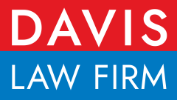Thursday, May 28th, 2009
Unsecured Claims
Unsecured debt may be generally described as a debt where credit was granted based solely upon the promise or ability of the debtor to pay. Claims that are not secured by any collateral or subject to setoff are generally unsecured claims. For purposes of bankruptcy, unsecured claims are classified and paid based on a priority list described in the Bankruptcy Code. Each class must be paid in full before the next lower class is paid anything.
Priority Unsecured Claims
The classes of priority unsecured claims are: administrative expenses of the bankruptcy, fees, and charges assessed against the estate; unsecured claims in an involuntary case that arise after filing but before appointment of a trustee or wages or commissions of employees of the debtor that are earned within 90 days before the date of a bankruptcy filing or the date of cessation of the debtor’s business; certain contributions to an employee benefit plan; unsecured claims of grain farmers and U.S. fisherman; certain spousal and child support; certain unsecured tax claims prior to the date of filing of bankruptcy; and unsecured claims based on commitments made by a debtor to maintain the capital of an insured federal depository institution.
Payment to Nonpriority Unsecured Creditors
After all of the priority claims are paid in full, other unsecured creditors who have filed a Proof of Claim on an allowed claim are paid. Next, allowed unsecured tardy or late claims are paid. Then allowed secured or unsecured claims for any fine, penalty, or forfeiture, or for multiple, exemplary, or punitive damages arising before the earlier of the date of the bankruptcy filing or the appointment of a trustee, to the extent that such claims are not compensation for actual pecuniary loss suffered by the claimant, are paid. Followed by interest at the legal rate from the date of the filing of the petition on any allowed claims paid.
